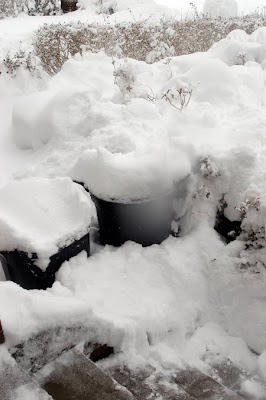Allegheny County Executive Dan Onorato does not like property reassessment one bit, which is bad because property reassessment is part of his job description.
Once upon a time, governments derived much of their revenue from property taxes, but in America income tax has slowly taken the lead. For the most part, American property tax dollars are the primary means by which local services (schools, fire protection, police, sanitation, etc.) are paid for. In Pennsylvania specifically, it is used primarily for supporting local school districts.
The Uniformity Clause in the State constitution allows different counties to tax properties differently, but requires that within any one county the tax is done in a uniform way. This seems like it would work simply in the case of property: just set the tax to be a blanket percentage of the property value of each property in the county. Uniformity? Absolutely.
The problem: how do you actually determine the value of a particular property in the county, and how often do you reassess that number?
Until the late eighties, the state required that every county do a full reassessment annually. In Allegheny county's case, this was done generally by looking at sales prices of properties in different areas, and using those to push the "assessed value" of the surrounding properties up or down a blanket percentage. That is to say, if the market in, say, Edgewood went up two percent over last year, the properties in Edgewood would all be reassessed two percent upwards.
When a given area's assessed value started getting out of whack with its real value, the county would do a "real" assessment again.
All through the nineties, various suits plagued the County over this practice, since the areas that got reassessed "for real" got reassessed heftily upwards 85% of the time, creating disparities in assessed value vs. real value between areas that were targeted for reassessment and areas that were simply recomputed.
Finally, thanks to a court order, in 2002 a county-wide reassessment was performed. Soon after, Dan Onorato was elected County Executive. He put a freeze on reassessments, choosing instead to regard 2002 as a "base year" and simply collect property tax based on every properties 2002 value. Since all properties were "really" reassessed in 2002, this would seem to satisfy the Uniformity Clause.
Not so fast, Dan.
The state law about using "base years" to compute property taxes does not require periodic reassessment at all. 2002's data can be (and has been) used indefinitely to compute Allegheny County's taxable property values. This creates its own set of disparities, as areas where property values have gone down (and, consequentially, the real net worth those area's residents have has gone down too) are now being overtaxed, while areas where property prices have risen are being undertaxed.
Three separate complaints have made their way all the way to the state supreme court, which
ruled (pdf link) against the county's current practice and demanded an immediate reassessment. It's a pretty epic ruling, well researched and written, with a great introductory quote from a 1909 court decision:
“Controversies growing out of the assessment and collection of taxes are as old as civilization. To question the assessment, to doubt the levy, and to delay the collector may be classed among those inalienable rights of mankind not guaranteed by any Constitution, but very generally asserted under the law of human nature.”
-Delaware, L.&W.R. Co.’s Tax Assessment, 73 A. 429, 430 (Pa. 1909).
Essentially, the court found that by indefinitely re-using 2002's numbers, the county was levying taxes in a sufficiently non-uniform manner as to be unconstitutional, specifically that "The Allegheny County scheme, which permits a single base-year assessment to be used indefinitely, has resulted in significant disparities in the ratio of assessed value to current actual value in Allegheny County."
Onarato, though, will have none of it. Though there is clear wording in the decision telling the county to reassess and instructing the lower court to see that through, the County Executive (and as of October 2009, candidate for Governor) had made it clear that he will not be carrying out such an assessment, and plans as Governor to address the situation at a statewide level.
Now, City Squid understands why the early Aughts were a time where reassessing property value seemed like a bad idea. The real estate market was clearly bubbling, and to let county income be based on such a volatile measure is foolish at best. But to cling to 2002's numbers indefinitely is equally foolish. We can see why, though: when the reckoning comes, and assessed value finally catches up to real value, heads will most certainly roll, either because the population feels slighted for having been overtaxed for so long, or mad as hell that their taxes just got hiked so high.
Our thought: better in the long run though to be fair and accurate and unpopular, than willfully ignorant of your own tax base's value.















































